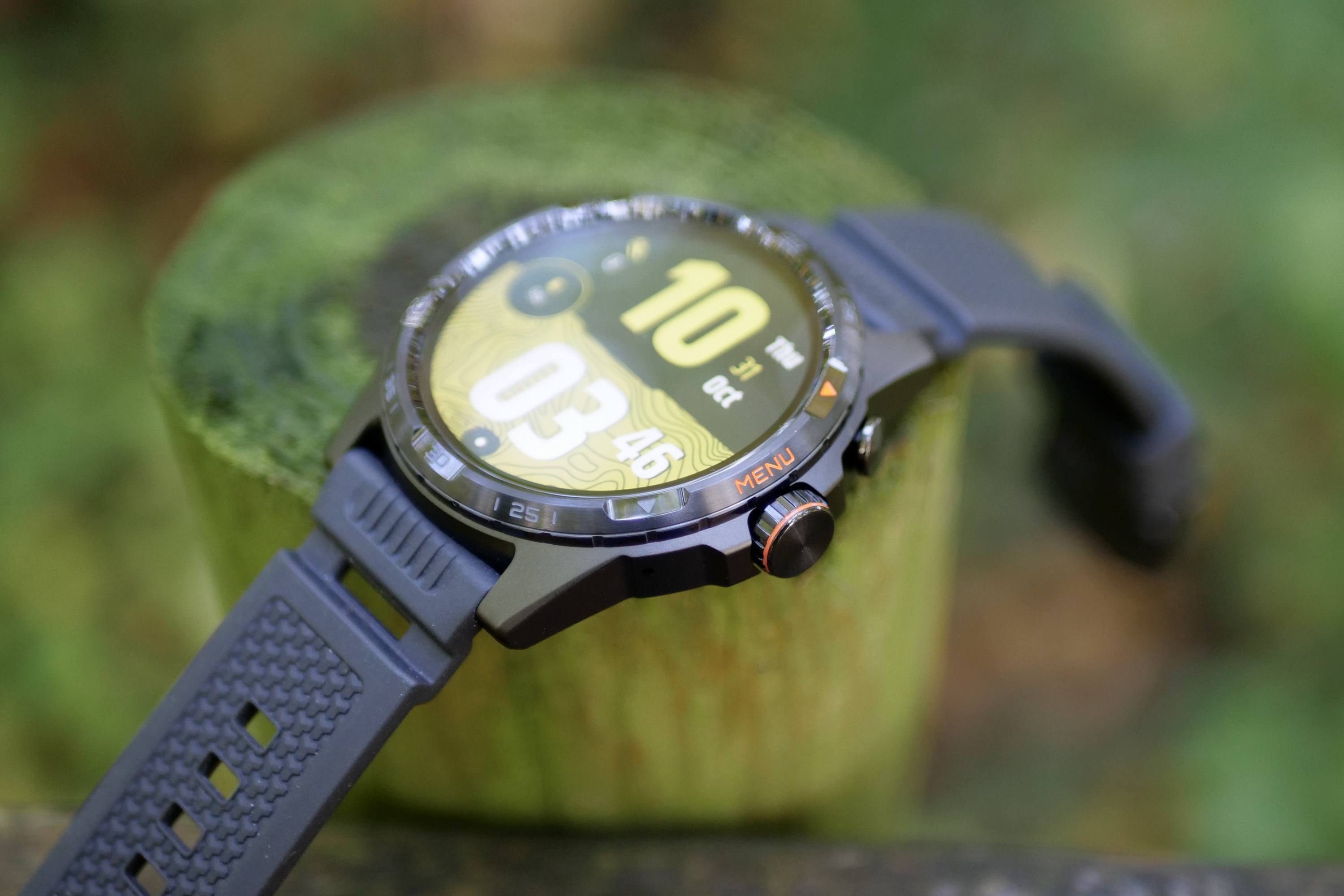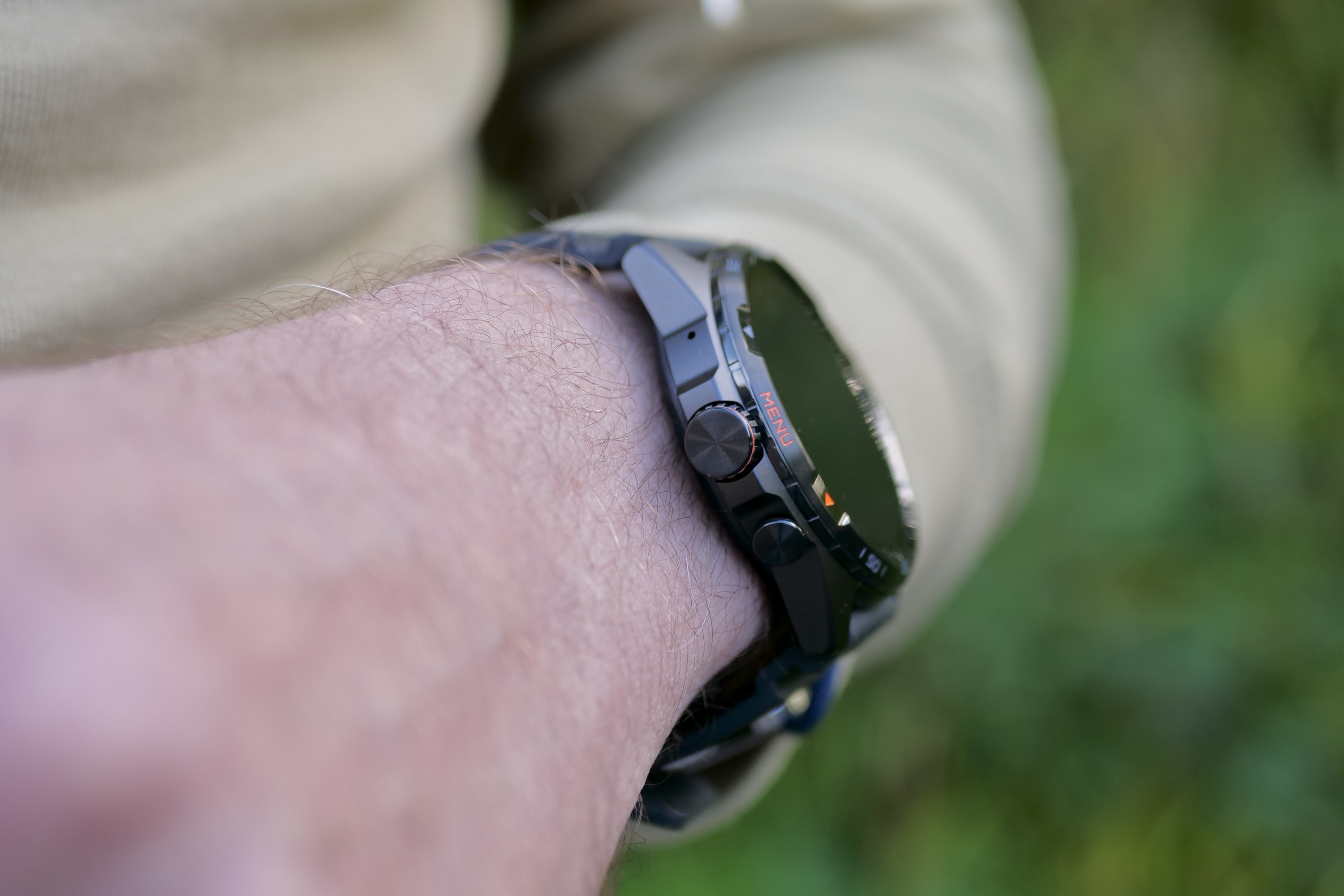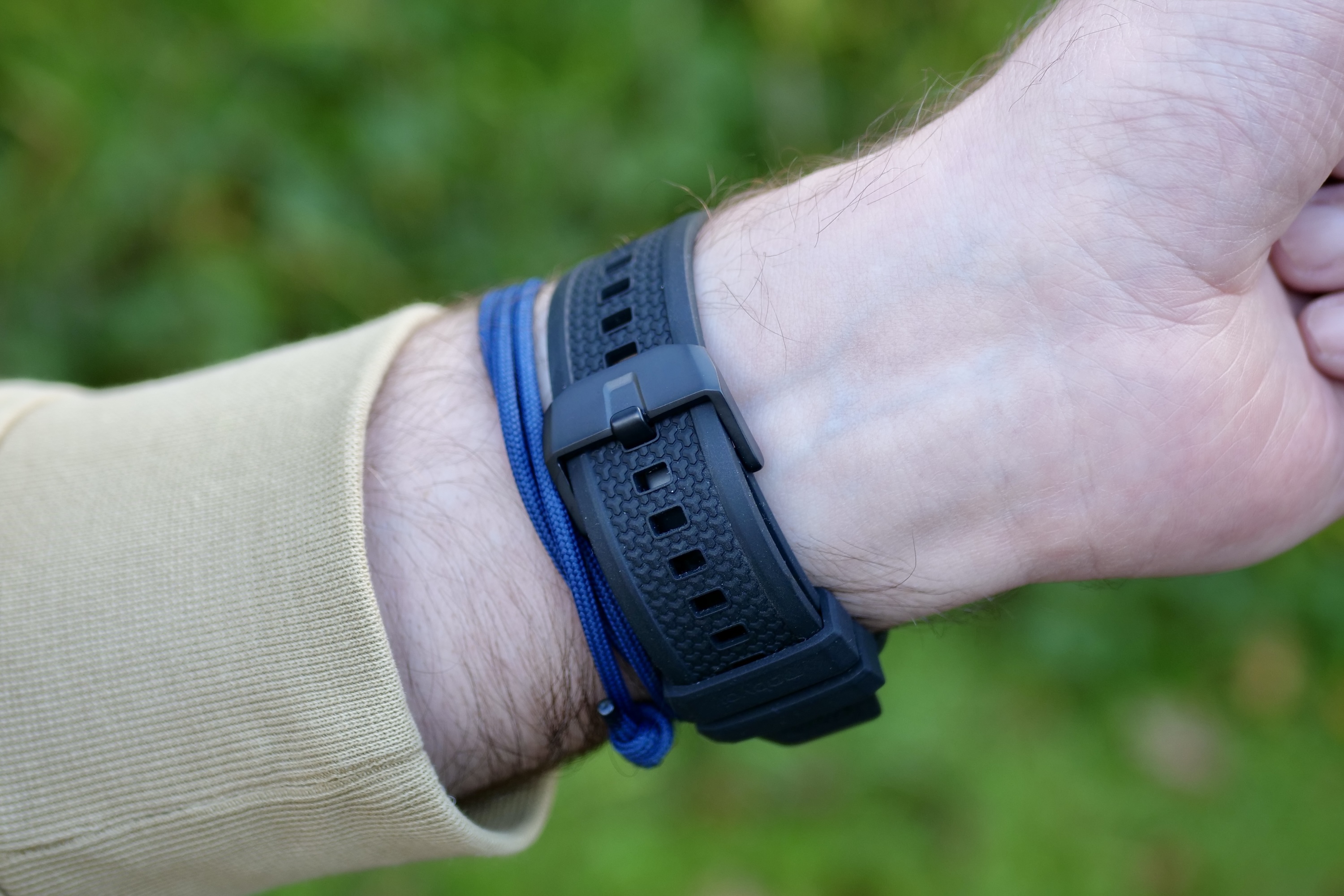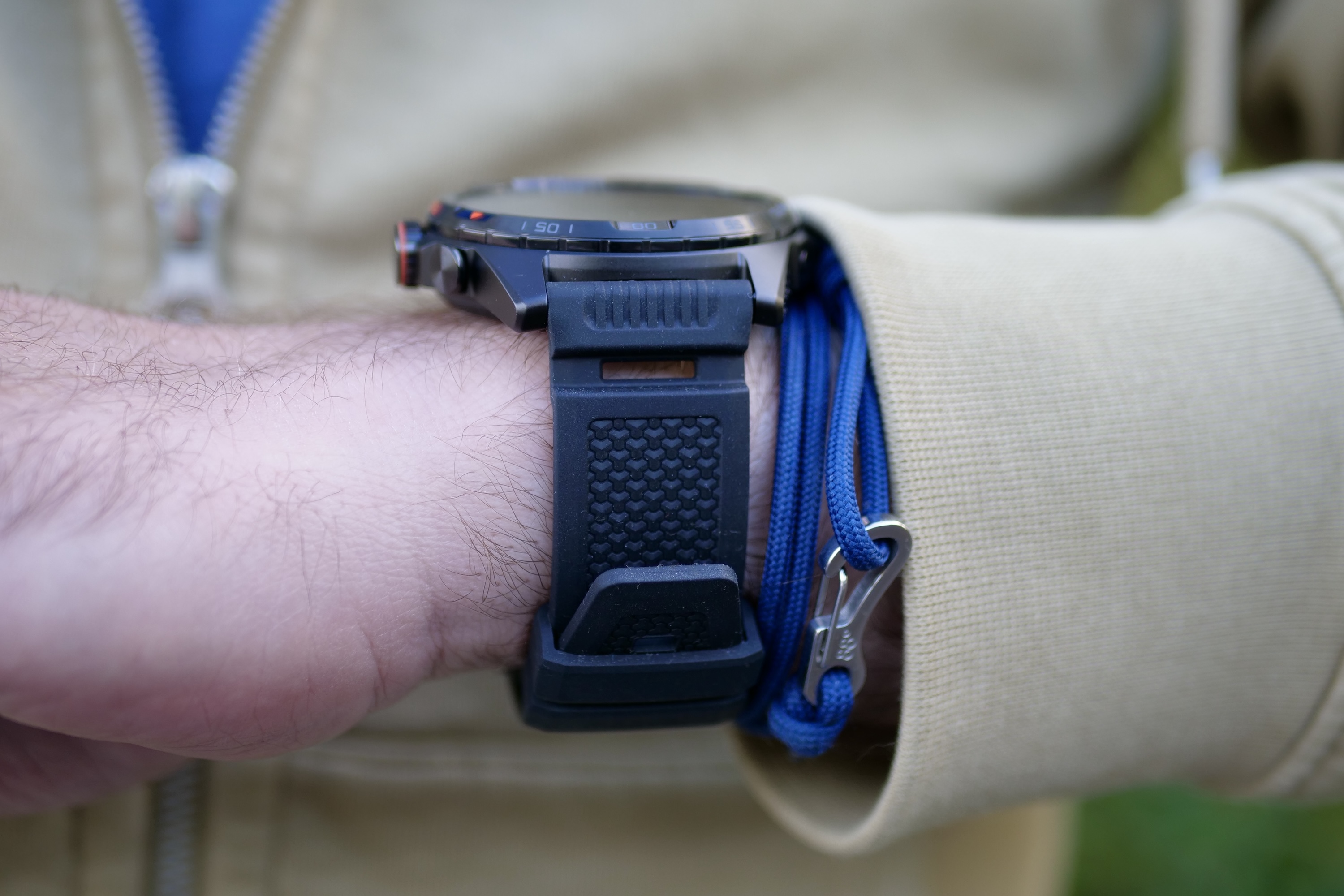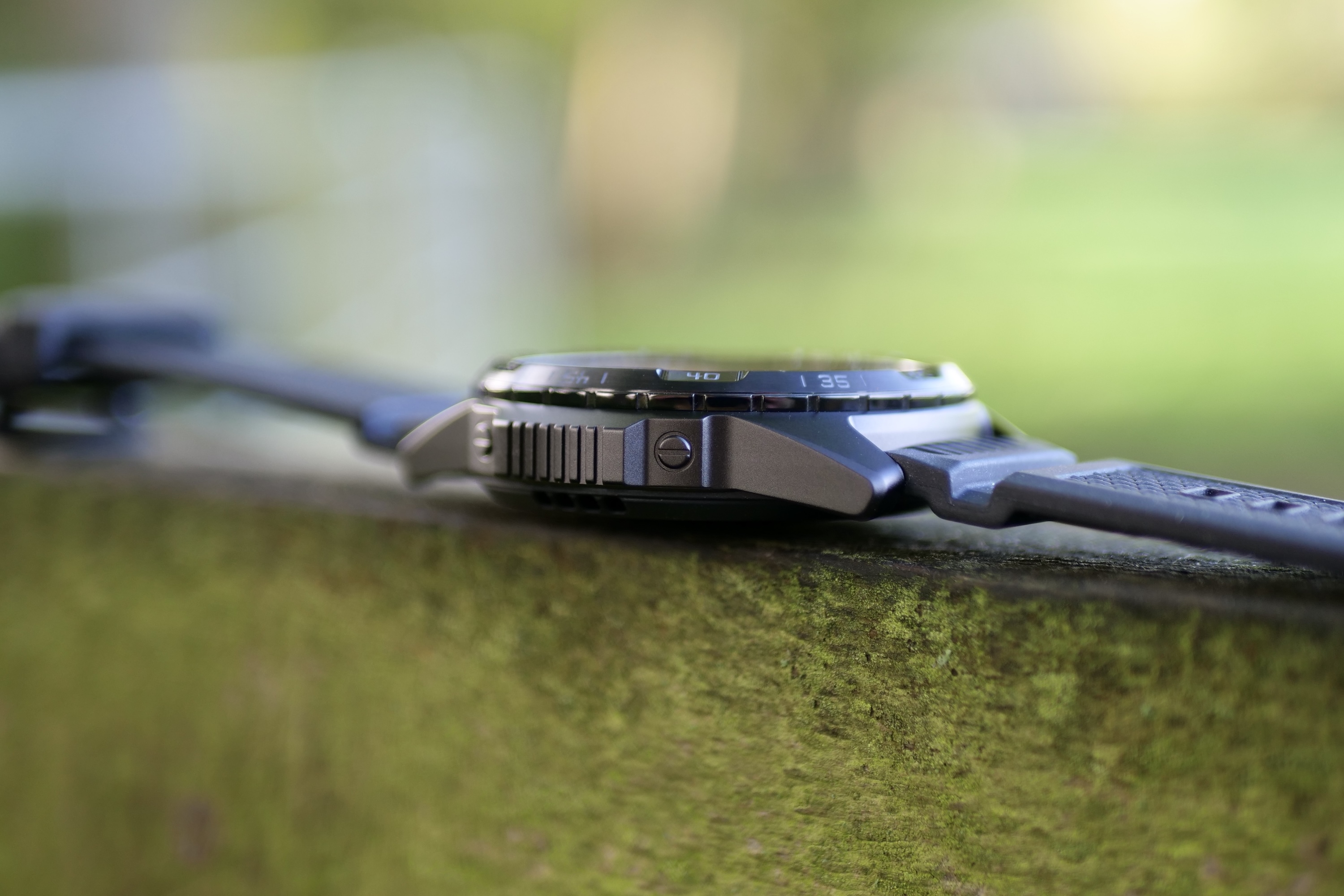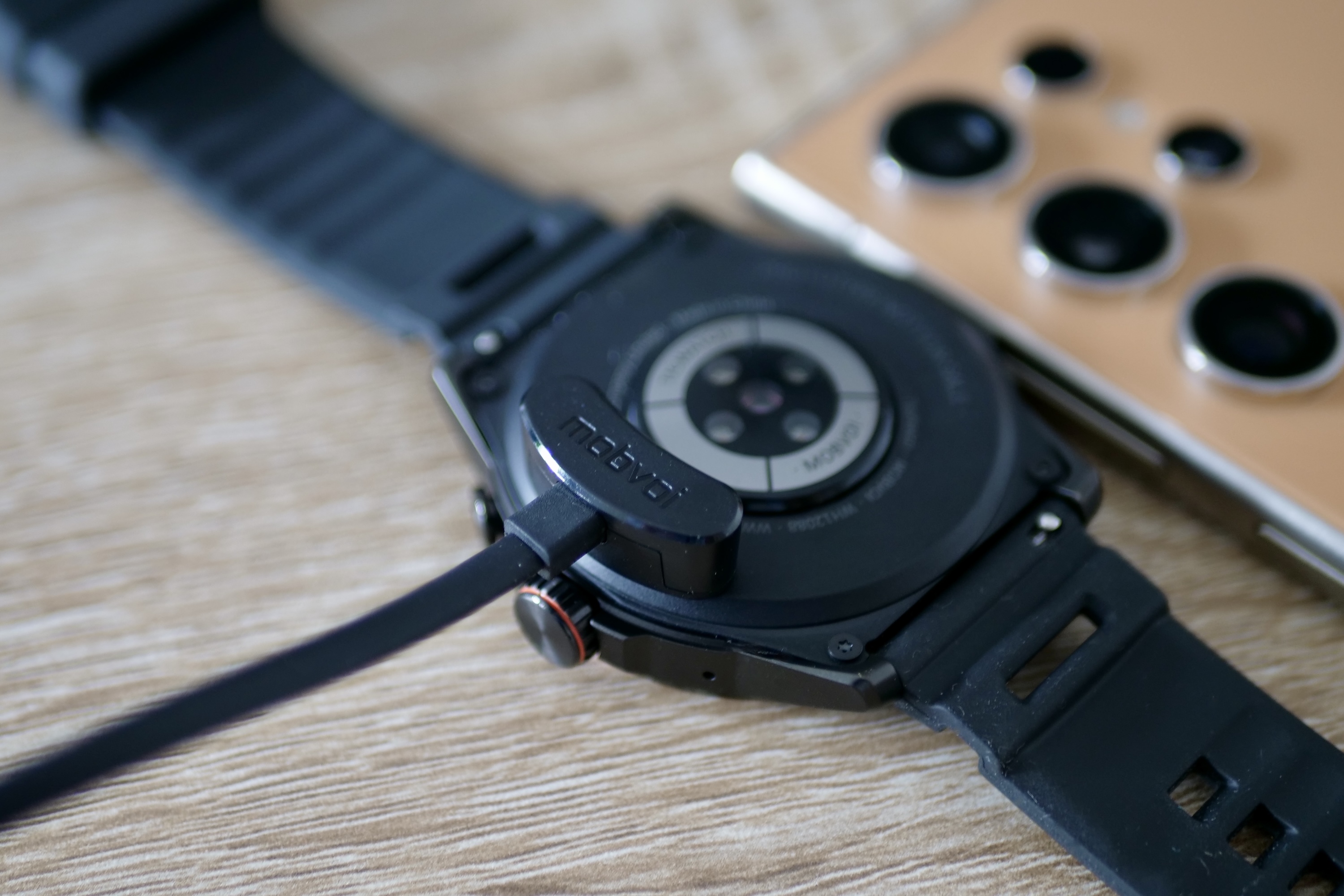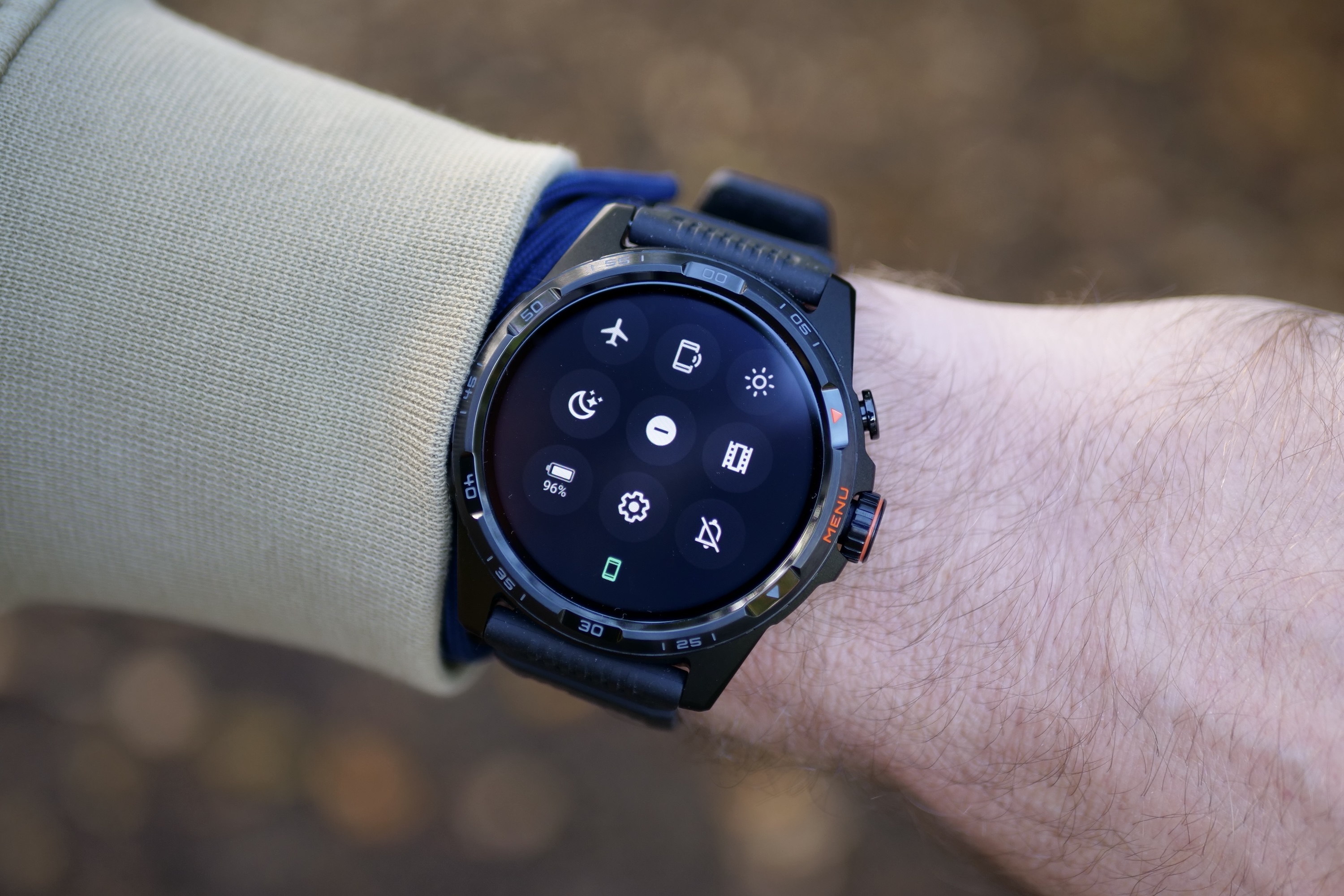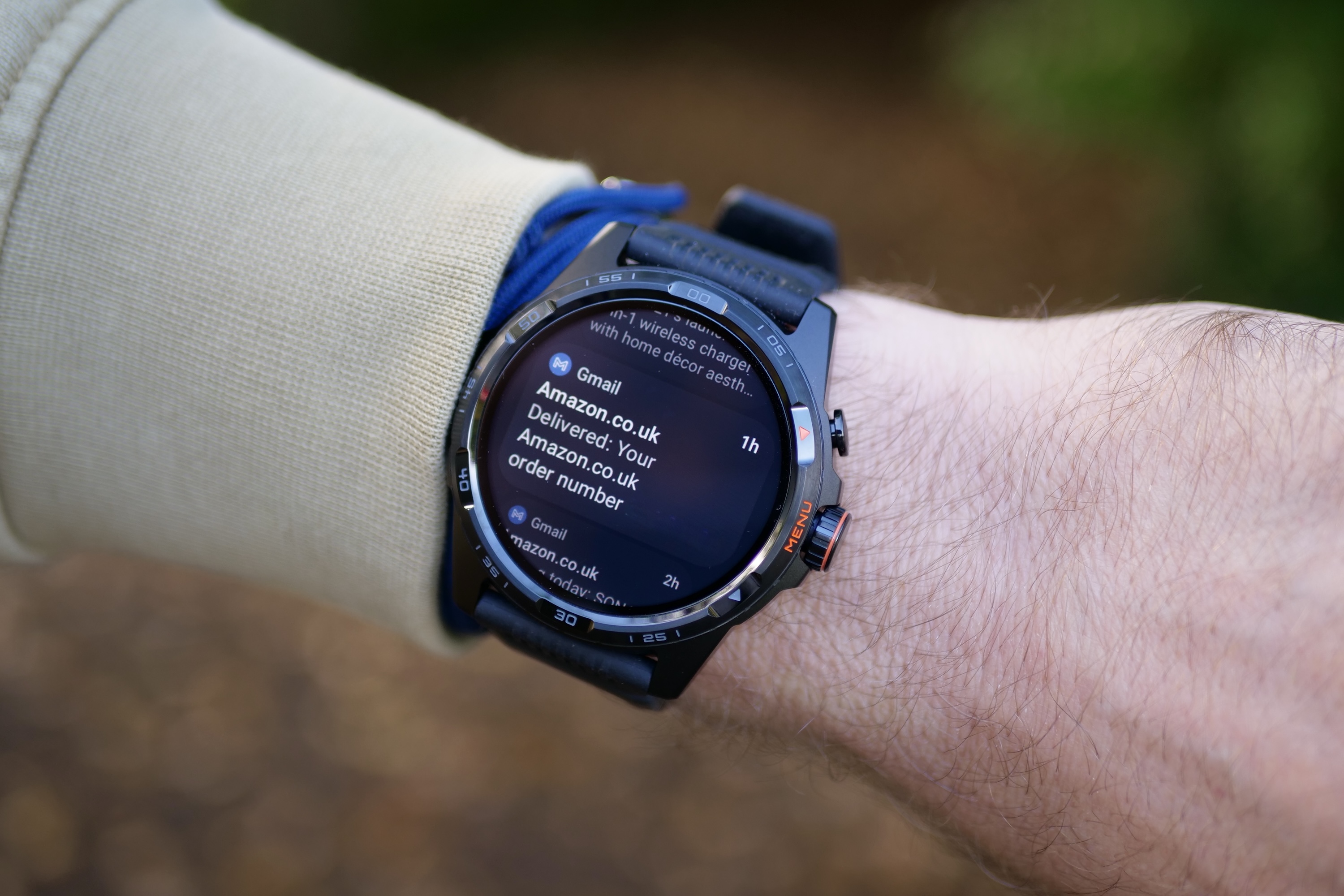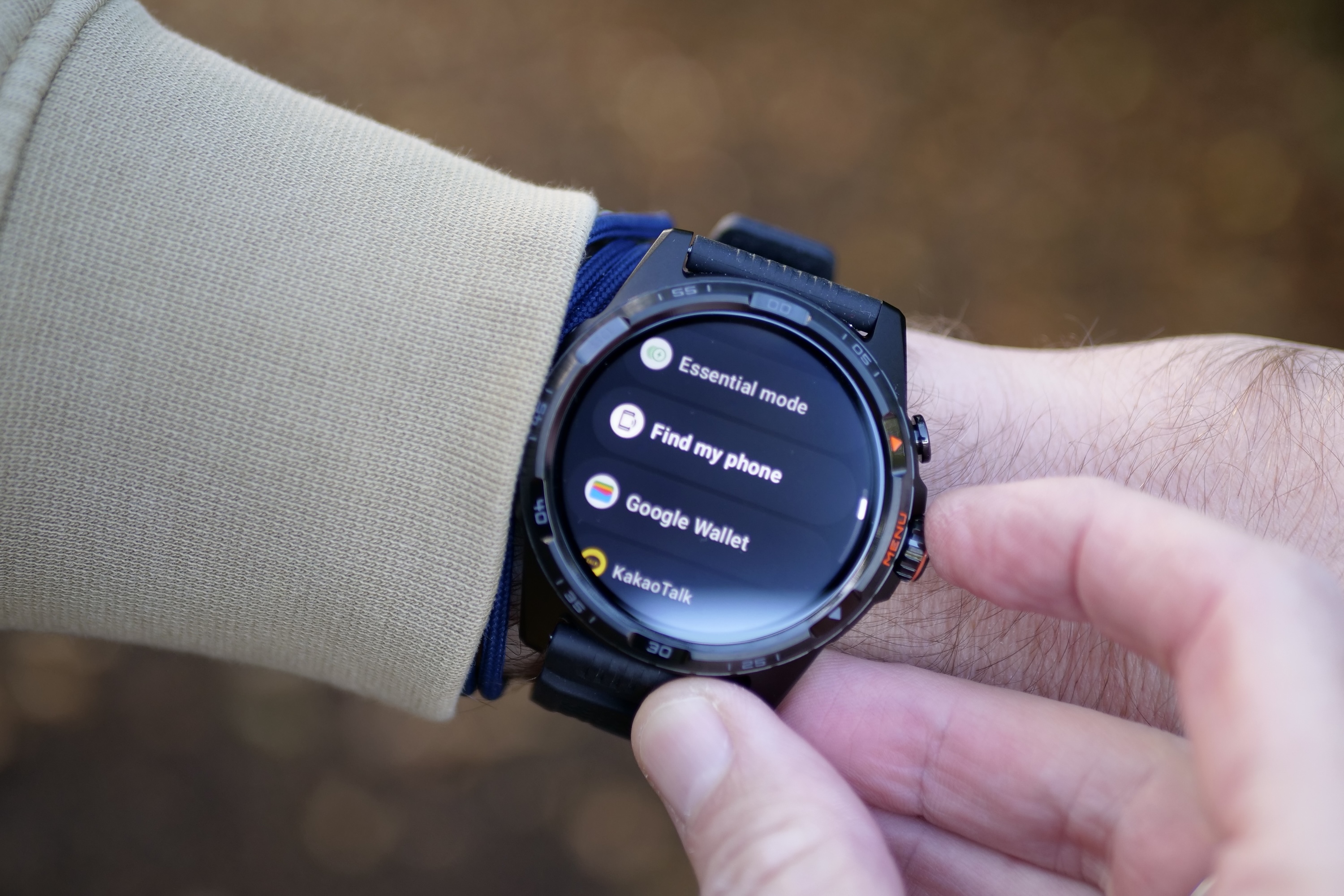I really shouldn’t like the Mobvoi TicWatch Atlas, and I perhaps should give it a bit of a kicking for being basically the same as Mobvoi’s last two Wear OS smartwatches, but I just can’t do it.
The Wear OS smartwatch landscape has become increasingly barren over the last year or so, yet Mobvoi’s still here, giving its already excellent smartwatch a makeover every now and then to keep us hooked. And I’m so glad it is.
What is the TicWatch Atlas?

Do you remember the TicWatch Pro 5 Enduro? Well, the Atlas is a redesigned version of that, which in itself was a gently warmed-over version of the TicWatch Pro 5. It’s another big, black (although a silver version is coming later this year) smartwatch unsuitable for small, thin wrists and anyone who balks at the idea of an 81-gram watch. It’s a tiny bit thicker than the Enduro at 12.05mm, bringing it closer to the original TicWatch Pro 5’s height. It’s attached to a thick, chunky 24mm rubber strap, complete with two equally durable keepers.
The great news is the Atlas has sapphire crystal over the 1.43-inch AMOLED screen for scratch protection; the bezel is made from aluminum, and the case is made from nylon and fiberglass. The strong materials used in its construction have ensured the Atlas meets MIL-STD-810H toughness standards and is water resistant to 5ATM. Inside is a Qualcomm Snapdragon W5+ Gen 1 chipset with 2GB of RAM and 32GB of storage space. No, you’re not mistaken; all of this is the same as the Enduro. Sapphire crystal aside, it’s the same as the original Pro 5, too.
Thankfully, the primary reason you should consider buying the Atlas also remains — the dual-screen technology and extended battery life it brings. Instead of using a simple ambient mode to always show the time on the screen, Mobvoi adds a second ultra-low-power OLED screen to show the time all the time. Not only this, but you can also scroll through it to show basic health data, preserving battery life from the 628mAh cell even more. It’s a huge benefit, and although I haven’t worn the Atlas for long yet, I have no reason to think it won’t match the Enduro’s excellent four-day battery life.
What it’s like wearing the smartwatch

The TicWatch Atlas isn’t dramatically different to wear than the Enduro, but the design is more “hardcore” than before, allowing Mobvoi to capitalize on the current trend of adventure-style watches, including the Apple Watch Ultra 2 and the Samsung Galaxy Watch Ultra. I’m very pleased Mobvoi got creative with the name, though, which I think is suitably cool. It didn’t just tack Ultra on the end for some free search clicks and call it a day.
This time, the bezel gets a series of numbers around it, plus bright orange accents guiding you toward the crown and single pusher. It’ll sound like a minor thing, but the button and crown both look great and really suit the style of the smartwatch. The crown rotates to move through menus, but the sensitivity is all over the place. It’s fine in Wear OS’s menus, but even the slightest movement when trying to choose different colors for watch faces sends it racing up and down the options list immediately.
Despite its size, the TicWatch Atlas is comfortable to wear, thanks to its flexible rubber strap, which also has plenty of holes for adjustment. However, they are quite widely spaced, and I found that they were either a bit too tight or loose. It has quick-release pins, so it’s easily swapped out, but the 24mm size may mean there are fewer options available, and the heart rate sensor means you can’t use a full NATO strap despite it being a great match style-wise.
Anything else not so good? I don’t like the fake screws next to the possibly equally fake sensor bulge on the left side of the case, and the charger is still the same old magnetic pogo-pin system, which is as unattractive as it is likely to come loose.
New software features

The TicWatch Atlas comes with Google’s Wear OS 4 installed, and aside from a host of Mobvoi apps, there doesn’t appear to be a heavy user interface on top of stock Wear OS. This again separates Mobvoi from Samsung, the other big player in Wear OS at the moment. For the Atlas, Mobvoi has also added a small selection of new health and exercise-related features.
Fall Detection makes it onto the Atlas, with emergency services being contacted if it detects a fall. This does need to be manually enabled for continuous monitoring, otherwise it’s only operative during exercise. There’s also an Emergency SOS feature to go with it, which will alert an emergency contact. It joins an updated version of TicMotion, which shows more stats, including Vo2 Max on the secondary display during a workout. Finally, the Mobvoi Health app will create a Heat Map for those playing team sports, showing movement and areas of the pitch you focused on. Otherwise, the software is the same as the Pro 5 and Enduro.
This isn’t a bad thing. Wear OS 4 is the latest version of the software in general use (Wear OS 5 has encountered problems on the Pixel Watch, stalling its release), the menus are clearly defined and easy to interact with using the screen and rotating crown, notifications have arrived from my Samsung Galaxy S24 Ultra reliably, and there’s a decent on-creen keyboard and a selection of apps including a calculator that may come in handy.
That said, there are a lot of Mobvoi apps to contend with, and almost all the health features require enabling before they work, so this isn’t a watch you can set up and expect to work immediately, unlike the Apple Watch Series 10. It’s frustrating to do this, as it’s easy to miss or forget to activate features, as you often need to agree to terms of use multiple times just to make the watch work. The watch faces are relatively uninspiring (the new Vitality face is shown in our photos), and Mobvoi wants you to pay for a greater choice through its own app.
Another not-really-new smartwatch

The $350 TicWatch Atlas isn’t entering an especially crowded space. Samsung’s Galaxy Watch Ultra and Galaxy Watch 7 are its most obvious competitors, but it’s also worth looking at Huawei’s recent models. After trying the excellent but expensive Huawei Watch Ultimate, I expect the new Huawei Watch GT 5 Pro is worth exploring, too. The Google Pixel Watch 3 is the other smartwatch for an Android phone to consider, but it takes the design in entirely the opposite direction with its simple, minimalist style.
The Mobvoi TicWatch Atlas isn’t a new smartwatch, just like the Enduro wasn’t exactly new, either. Both are slightly revised versions of the Pro 5, but at least Mobvoi is keeping Wear OS alive with these small iterations. I’m so pleased it’s still using the excellent second-screen system, which gives Mobvoi smartwatches some of the longest battery life you can get. I also like the rugged style, which isn’t as challenging as the Galaxy Watch Ultra’s look and instead builds on the great-looking TicWatch Pro 5.

It’s easy to get caught up in expecting “brand new” devices on an annual or even more regular basis and then feel shortchanged when they don’t arrive. But the TicWatch Atlas proves it’s not always necessary, especially in the slow-moving world of smartwatches, where the underlying technology hasn’t changed much over recent years to make a big update possible anyway.
If you want a tough smartwatch with a tried-and-tested circular design and some of the longest battery life in Wear OS, take a good look at the TicWatch Atlas.

